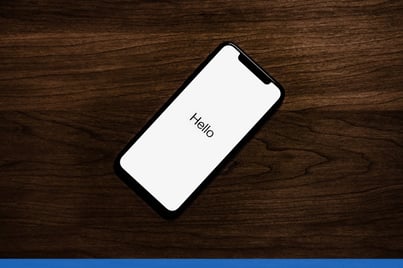6 Public WiFi Security Safety Tips To Use in 2021
There’s no escaping the internet nowadays. The need for us to be able to access it virtually anytime, anywhere, has meant that cafes, hotels and restaurants are offering public Wi-Fi access for free... but at a hidden price.

Slowly but surely, the security risks around public Wi-Fi have been growing and growing, with cyber criminals taking advantage. Businesses now face a rapidly rising threat of keeping their users secure when travelling or working remotely. Don't worry! we've put together the top Public WiFi safety tips to use in 2021.
Public WiFi is so convenient and easy to access for anyone. There is actually 2 types of public WiFi networks: secured and unsecured.
- Unsecured networks can be connected to within range and without any type of security feature like a password or a login.
- A secured network requires the user to agree to legal terms or to register for an account with their email, some public networks will even request for a fee or a store purchase to gain access.
Enable 2FA on any accounts that contain personal information
 One of the most criminally underused added layers of protection. 2-factor authentication is a must for those who want to have a little extra security in place for their laptops, mobiles and tablets.
One of the most criminally underused added layers of protection. 2-factor authentication is a must for those who want to have a little extra security in place for their laptops, mobiles and tablets.
Criminals can lurk around public networks, looking for their next victim. Enable multi-layers of protection on email, social networking and bank accounts to keep your data safe.
Use a VPN (virtual private network) when you use public WiFi
This is one of the most effective (and simplest) ways of keeping your information safe when using public Wi-Fi. A virtual private network will reroute your traffic through a private, encrypted network.
All that’s needed is a quick download of a VPN app on your phone or mobile device and remembering to access your VPN before connecting to the internet.
Monitor your Bluetooth connectivity
Bluetooth connections over public WiFi can be very vulnerable intermediate points of access for data and identity theft. There are a few different types of hacks cyber criminals will use to access your data via Bluetooth.

-
Blue-bugging is a technique that allows skilled hackers to access your mobile device. They can access anything on your devices such as your messages, photos and emails.
-
Blue snarfing exploits your Bluetooth connection with the goal to steal your information from your device. A hacker will wirelessly connect to your device (without your knowledge) and access your downloads and data on your phone, once they have access to this data they can do whatever they wish with it.
-
Blackjacking is the most common form of Bluetooth hacking. This happens when a hacker searches for any discoverable devices on public WiFi and then sends spam in the form of a text message or an email, this type of Bluetooth hack is quite similar to phishing.
"92% of adults use public WiFi on a daily basis"
Keep On Top Of Security Updates At All Times
Perhaps one of the most difficult methods of security is getting your users to remember those dreaded updates. Often seen as a hassle, a lot of us just don’t see the importance of regularly updating our operating systems.
Then, in came WannaCry…
The hugely damaging ransomware attack shook the NHS and all started due to a delayed Windows update that went on to affect hundreds of thousands of computers. If Wanna-cry taught us one thing, it’s that staying on top of software updates is the most prudent way to protect yourself against hackers and cyber criminals.
Turn Off File-sharing And Close Shared Files On Your computer
Sharing folders can be a great way of working collaboratively with your team, as well as sharing photos with friends and family. But one thing that many of us don’t realise, is that once your computer connects to a public Wi-Fi, those folders can be viewed by anyone else on your network.
Make sure to close them and turn off file-sharing before logging onto a public network with your laptop or mobile device. Also, adjusting your privacy settings to ensure they are different for public and private networks is important to remember.
File sharing is very easy and convenient for everyone. However, it comes with many security risks.
Malicious software
P2P networks make it very easy for files to be shared with anyone, as long as they have the same file-sharing software. However, you don’t always know who will be receiving those files.
When you use file-sharing networks you can potentially open up your PC to a host of malware threats such as worms, Trojans, key loggers, spyware, adware and more, if you do not understand how to protect your PC when using file-sharing networks.
Identity theft
Sharing files over a public WiFi networks increases the chances of anyone having access to them, even by accident. If someone has the skills to intercept the network they could potentially send all of the files to them or even make a copy of them without the sender even knowing.
Once the cyber criminal has access to this data they can commit identity theft and gain access to your personal accounts and steal any money or data they want.
Avoid signing into accounts that contain personal information, including social media and online banking.
Assuming that you’ve taken precautions beforehand, the next step is to be cautious after logging onto a public network. One of the best ways to play it safe is to avoid logging into any accounts that contain personal information, such as social media, work email and especially, online banking.
The best way to remember this is that even though a website itself might be reputable, personal information still isn’t secure as long as the network is insecure.
What you should do to stay safe on Public Wi-Fi:
The number of free public WiFi networks is constantly growing, but remember not every hot spot you access is safe and secure, your devices security firewall might not be strong enough to defeat any incoming cyber attacks, use these tips to stop anything malicious from gaining access to your data:
-
Enable 2FA on any accounts that contain personal information
-
Use a VPN (virtual private network) when you use public WiFi
-
Monitor your Bluetooth connectivity
-
Keep on top of security updates- at all times
-
Turn off file-sharing and close shared files on your computer
-
Avoid signing into accounts that contain personal information, including social media and online banking.
.png)
-1.png)